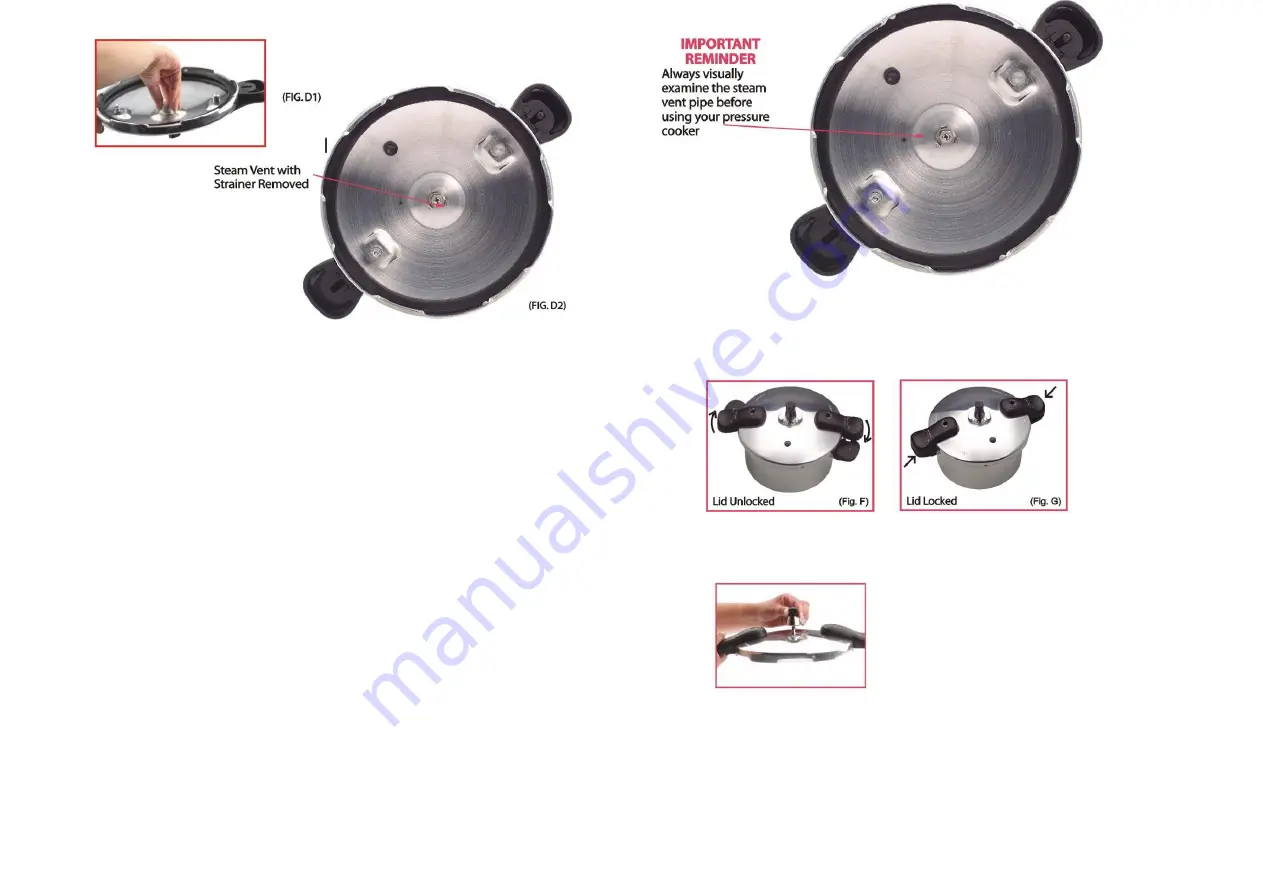
USING YOUR PRESSURE COOKER
Having familiarized yourself with the components of the unit and their purposes, it
is important that you read the following information about pressure-cooking and the
step-by-step instructions before you begin to cook.
Pressure cookers create moist heat under pressure to cook the food, because the
cooking process is done in a sealed vessel, very little liquid is lost. Hence, you will
need only about 8 oz. more liquid than is needed for the finished dish. You can
achieve the best results by following these simple step-by –step instructions:
1.
Prepare your ingredients using the recipe you have selected.
2.
If you are cooking vegetables, soups or desserts, skip to step.
3.
Many meat and poultry recipes call for brown the meat or poultry before
cooking. To brown the meat or poultry using your pressure cooker, preheat the
uncovered pressure cooker, being careful not to overheat the cooker. Pour the
required amount of cooking oil called for in the recipe into the cooker.
CAUTION: Pouring cooking oil into an overheated pan could cause the oil to
ignite.
4.
Put the meat or poultry in cooker and sear thoroughly on all sides until it is
deep brown and crisp. Monitor the heat to prevent burning. Season. Less
seasoning may be required, as foods cooked in a pressure cooker retain more of
their natural flavor. Remove pressure cooker from heat and allow it to cool
slightly before adding liquid to the unit.
5.
Pour the amount of liquid called for in the recipe into the pressure cooker.
Handy Tip: When preparing more than one item at a time, make sure that the items
being prepared have the same cooking times and temperatures.
6. To lock the lid in place, align the “V” mark on the lid with the arrow on the body
handle. Rotate the lid until the cover drops into position. Lock the lid in place by
rotating it clockwise until the lid handle is aligned with the body handle. The
pressure cooker lid is properly locked in place when the lid handles are directly
above the body handles.
DO NOT OVER-ROTATE THE LID
(Fig F and Fig G).
7. Place the pressure regulator in the vent pipe, screwing it in until it moves down
no further. The pressure regulator will fit loosely on the vent pipe. It will not touch
the top of the pressure cooker cover.
8. Heat the pressure cooker until the pressure regulator begins a gentle rocking
motion. A medium to high heat setting is best. The safety lock will move up and
down, releasing dry air and a little steam. Once the cooker has reached its operating
pressure and temperature, the safety lock will seal and remain in the up position
until the pressure is released. The overpressure plug will rise slightly and seal as
well.
9. Calculate cooking times when the pressure regulator begins to rock gently.
Gradually lower the heat to maintain a slow, steady rocking motion. Cook for time


























